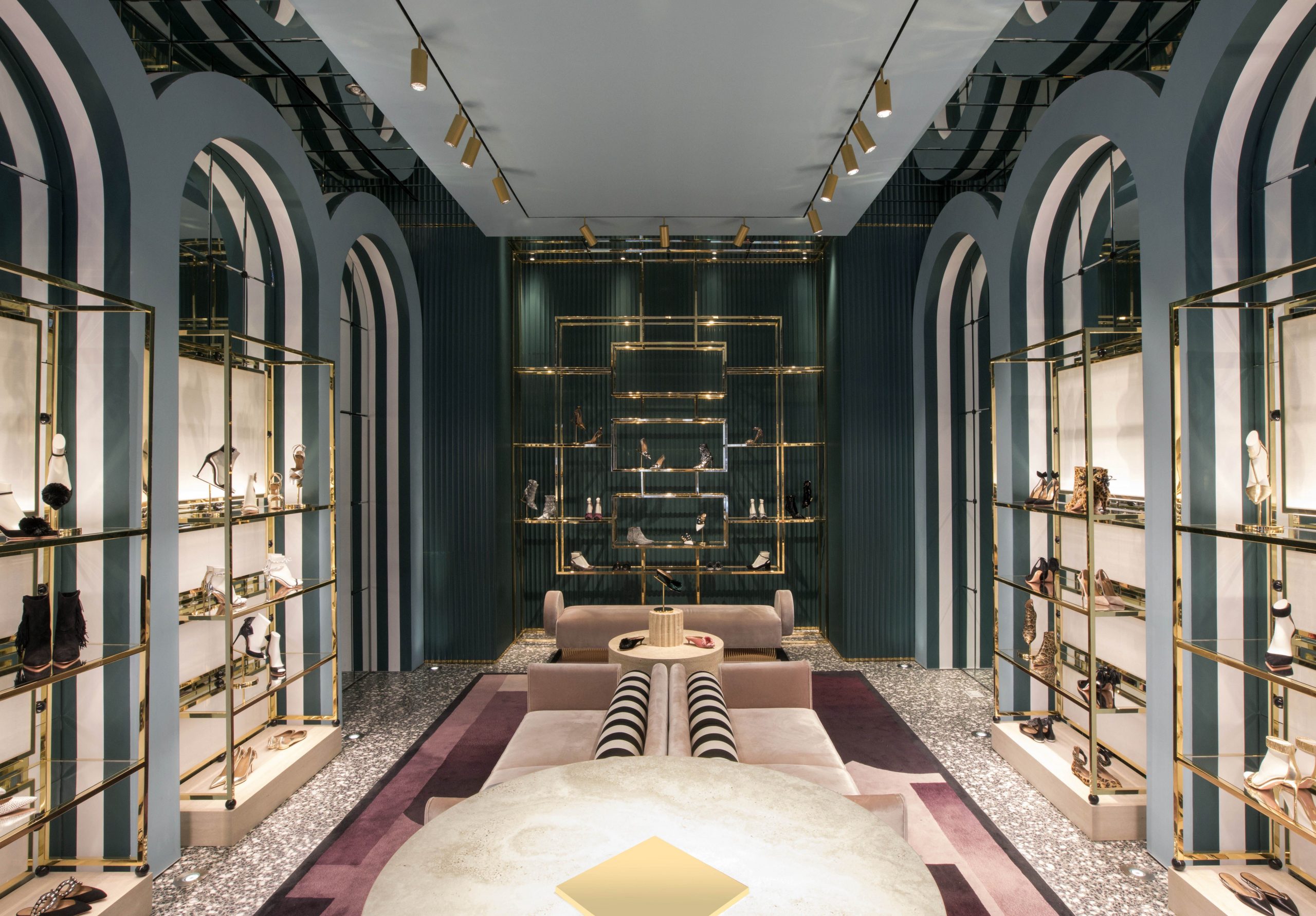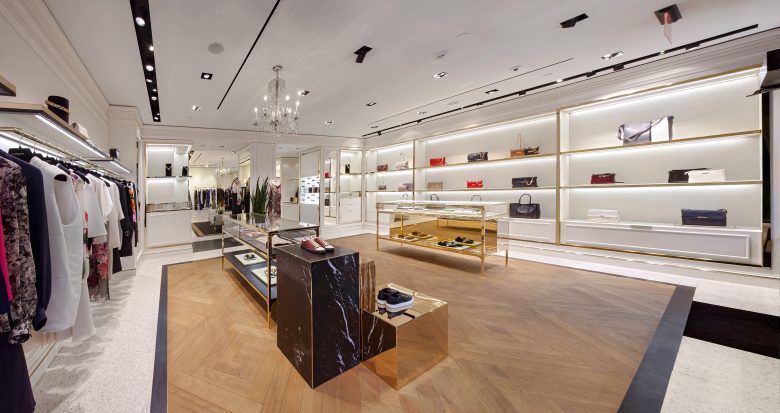Retail interior design plays a vital role in captivating customers and creating a memorable shopping experience. By carefully curating the ambiance, aesthetics, and layout of a store, retailers can significantly impact consumer behavior, leading to increased sales and customer loyalty. In this article, we will explore the importance of retail interior design and its profound influence on the overall customer experience.
When stepping into a retail store, customers expect more than just a place to make purchases. They seek an immersive and pleasant environment that engages their senses and compels them to explore further. This is where retail interior design comes into play. By strategically designing the layout, incorporating captivating elements, and utilizing the psychology of consumer behavior, retailers can transform their stores into enticing destinations that leave a lasting impression.
Why is retail interior design crucial for creating a captivating customer experience?
Creating a Welcoming Atmosphere
The first impression a customer gets upon entering a store can make or break their shopping experience. Retail interior design sets the stage for a warm and inviting atmosphere. A well-designed entrance, attractive window displays, and a visually appealing storefront entice customers to step inside. Once inside, they should feel comfortable and welcomed, encouraging them to explore the store further.
Enhancing the Brand Image
Retail interior design acts as a reflection of the brand’s identity and values. The store’s ambiance, color scheme, and decor should align with the brand’s personality, creating a cohesive experience for customers. Consistency between the physical store and the brand image builds trust and reinforces brand recognition, making customers more likely to develop a deeper connection with the brand.
Improving Customer Flow
Efficient store layout and spatial design are critical for guiding customers through the shopping journey. The flow of the store should be intuitive, with clearly defined pathways that lead customers to different product categories and sections. By optimizing customer flow, retailers can maximize exposure to various products, ultimately increasing the likelihood of purchase.
What are the key design elements that effectively capture customers’ attention and engage them in the retail environment?
Lighting
Proper lighting sets the mood and highlights key areas within a store. Bright, well-lit spaces create a sense of openness and vibrancy, while softer lighting can create a cozy and intimate atmosphere. By using a combination of natural and artificial lighting, retailers can draw attention to specific products or areas, making them more visually appealing.
Colors and Visual Appeal
Color psychology plays a significant role in influencing consumer behavior. Different colors evoke various emotions and have distinct effects on mood. Retailers can strategically use colors to create a desired ambiance. For example, warm colors like red and orange can stimulate appetite and excitement, making them ideal for food-related retail spaces.
Store Layout and Spatial Design
An optimized store layout ensures a seamless shopping experience. The arrangement of aisles, shelves, and displays should encourage exploration and easy navigation. Placing popular or high-margin items strategically throughout the store can capture customers’ attention and lead to increased sales.
Product Placement and Visual Merchandising
Visual merchandising involves arranging products in an appealing and organized manner. Eye-catching displays and well-coordinated product placement can draw customers’ attention, promote cross-selling, and encourage impulse purchases. By creating visually stunning displays, retailers can enhance the overall shopping experience and increase sales.
Comfortable and Inviting Spaces
Retail interior design should prioritize creating comfortable and inviting spaces where customers can relax and engage with the products. Incorporating comfortable seating areas, interactive product demonstrations, or even designated play zones for children can make the shopping experience more enjoyable for customers, encouraging them to spend more time in the store.

How does interior design impact the psychological aspects of customers and influence their shopping behavior?
Emotional Connection
Retail interior design has the power to evoke emotions and create a sense of connection between customers and the brand. By incorporating elements that resonate with customers’ values and aspirations, retailers can establish an emotional connection that leads to brand loyalty and repeat business.
Impulse Buying and Conversion Rates
Well-executed retail interior design can influence impulse buying behavior. By strategically placing attractive and enticing products near the checkout area or at eye level, retailers can increase the likelihood of spontaneous purchases. Additionally, a thoughtfully designed store can improve conversion rates by creating a sense of urgency and encouraging customers to make purchasing decisions.
Customer Satisfaction and Loyalty
A positive shopping experience fosters customer satisfaction and loyalty. When customers feel comfortable, engaged, and satisfied with their shopping experience, they are more likely to become loyal patrons and advocate for the brand. Retail interior design plays a significant role in shaping these experiences and nurturing long-term customer relationships.
What role does technology play in enhancing the effectiveness of retail interior design and shaping the customer experience?
Technological advancements have opened up new possibilities for retail interior design, further enhancing the customer experience. Here are some ways technology is revolutionizing the field:
Interactive Displays and Digital Signage
Interactive displays and digital signage can engage customers and provide them with valuable product information. Touchscreen displays, interactive mirrors, and dynamic signage can create an immersive and interactive shopping experience, allowing customers to explore products in a more engaging and informative way.
Augmented Reality and Virtual Reality
Augmented reality (AR) and virtual reality (VR) technologies enable customers to visualize products in real-world settings or virtual environments. These technologies allow customers to try on virtual clothing, visualize furniture in their homes, or experience virtual walkthroughs of retail spaces, providing a highly interactive and personalized experience.
Mobile Applications and Personalization
Retailers can leverage mobile applications to enhance the in-store experience. Mobile apps can provide personalized recommendations, real-time promotions, and interactive maps to guide customers through the store. By integrating mobile technology with retail interior design, retailers can create a seamless and personalized shopping journey.
Case Studies: Successful Retail Interior Design Examples
To illustrate the impact of retail interior design, let’s look at some successful case studies:
Apple Stores
Apple’s retail stores are renowned for their sleek and minimalist design. The open layout, ample natural light, and clean aesthetics create a welcoming and premium atmosphere. The strategic placement of product displays and the iconic Genius Bar contribute to a seamless and engaging customer experience.
Nike
Nike’s flagship stores are designed to inspire and immerse customers in the brand’s athletic lifestyle. They incorporate dynamic visual displays, interactive technologies, and dedicated areas for product customization and testing. The store design complements the brand’s energy and innovation, providing customers with an exciting and memorable shopping experience.
IKEA
IKEA’s retail interior design focuses on creating a homely and interactive environment. The store layout simulates real-life home settings, allowing customers to envision how IKEA products can fit into their homes. The integration of play areas for children and cozy room setups provides a unique and family-friendly shopping experience.
What are the key considerations and steps involved in implementing effective retail interior design strategies for creating captivating and successful retail spaces?
To create a captivating retail interior design, consider the following strategies:
Hiring Professional Designers
Engaging professional interior designers with expertise in retail spaces can ensure a cohesive and impactful design. Designers can help translate the brand’s vision into a physical space that aligns with the target audience’s preferences and desires.
Conducting Market Research
Understanding the target audience’s preferences, needs, and shopping behaviors is crucial for effective retail interior design. Conduct market research to gather insights and tailor the design to meet customer expectations.
Budgeting and Planning
Develop a budget and plan for the retail interior design project. Consider factors such as materials, fixtures, furniture, and technological installations. Proper planning and budgeting ensure a well-executed design within the available resources.
Regular Store Updates and Maintenance
Retail interior design should not be a one-time investment. To keep the design fresh and appealing, plan for regular updates and maintenance. Stay attuned to changing trends and customer preferences to ensure the store remains captivating and up-to-date.
Retail interior design significantly impacts the customer experience and plays a crucial role in captivating customers. By creating a welcoming atmosphere, incorporating captivating design elements, and considering the psychological effects, retailers can enhance customer satisfaction, drive sales, and foster long-term loyalty. Embracing technology and learning from successful case studies further empowers retailers to create unforgettable shopping experiences.
In conclusion, hiring the services of “SHEinterior” for Retail Interior Design in Singapore offers three compelling reasons to enhance your retail space. Their expertise in retail spaces, tailored solutions for brand identity, and optimization of store layout and customer flow make them the ideal partner for creating captivating and successful retail environments. With their specialized knowledge and commitment to delivering exceptional designs, “SHEinterior” can transform your retail space into a captivating destination that reflects your brand, engages customers, and ultimately drives business success. Don’t miss the opportunity to leverage their expertise and create a truly remarkable retail experience.



